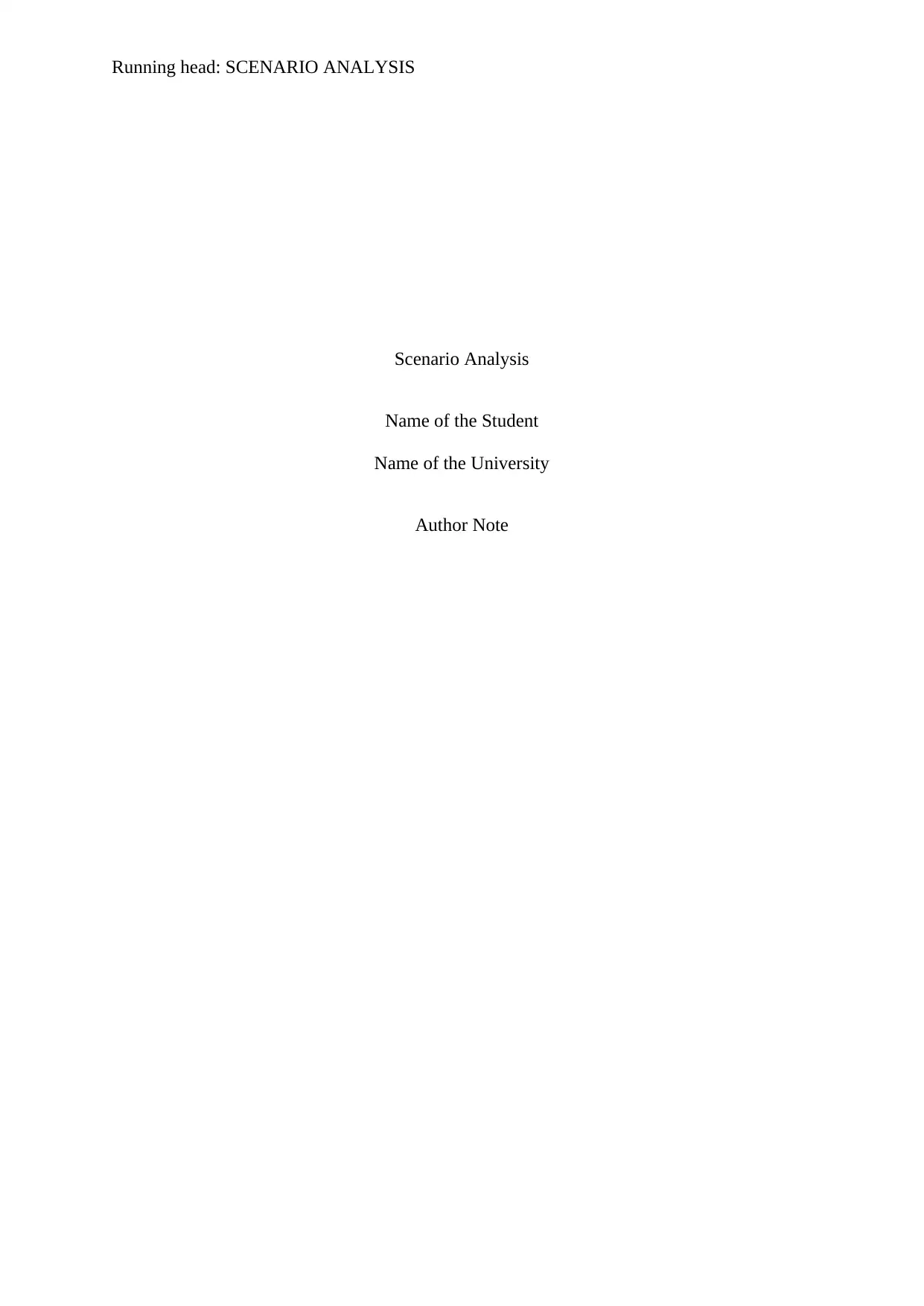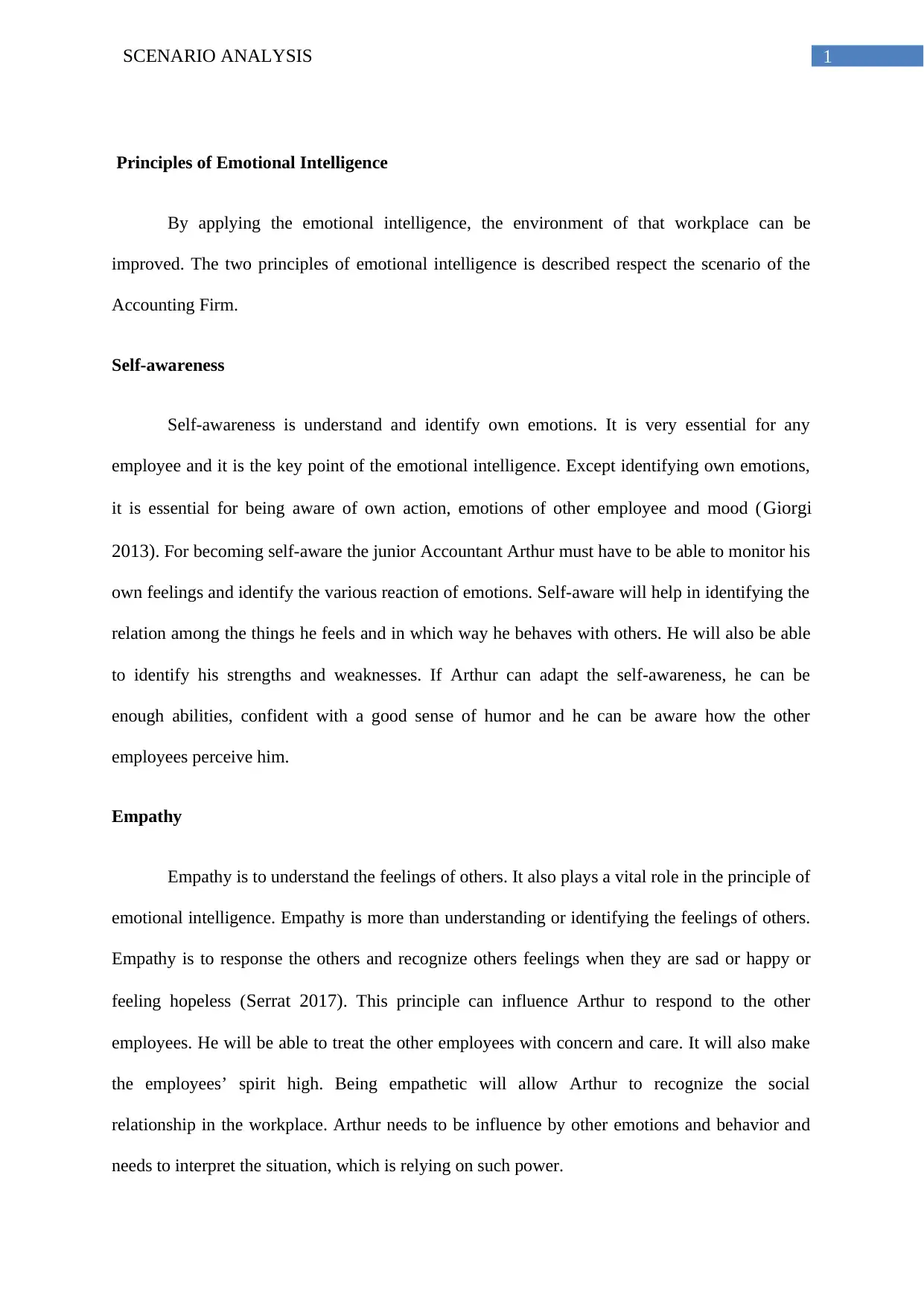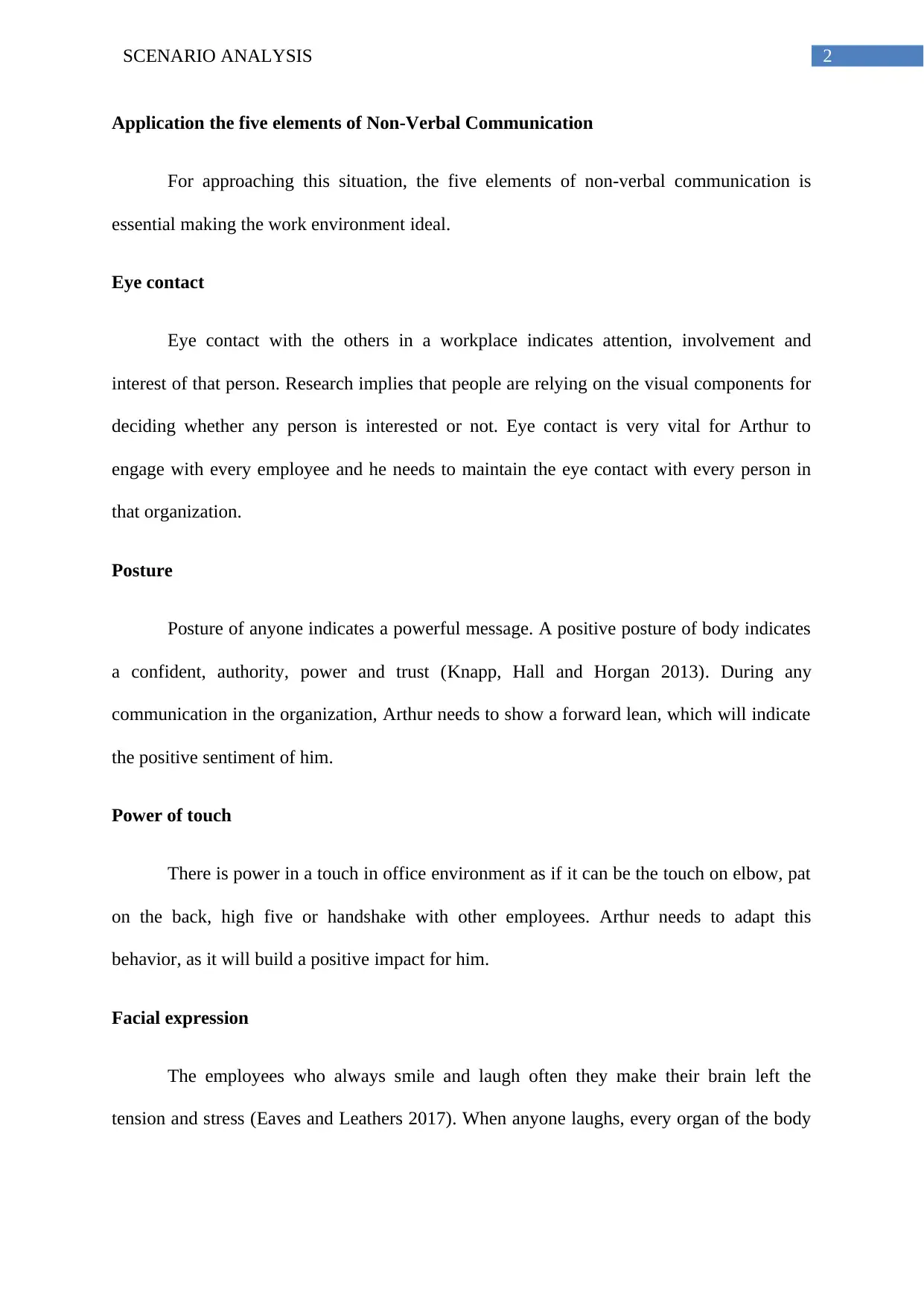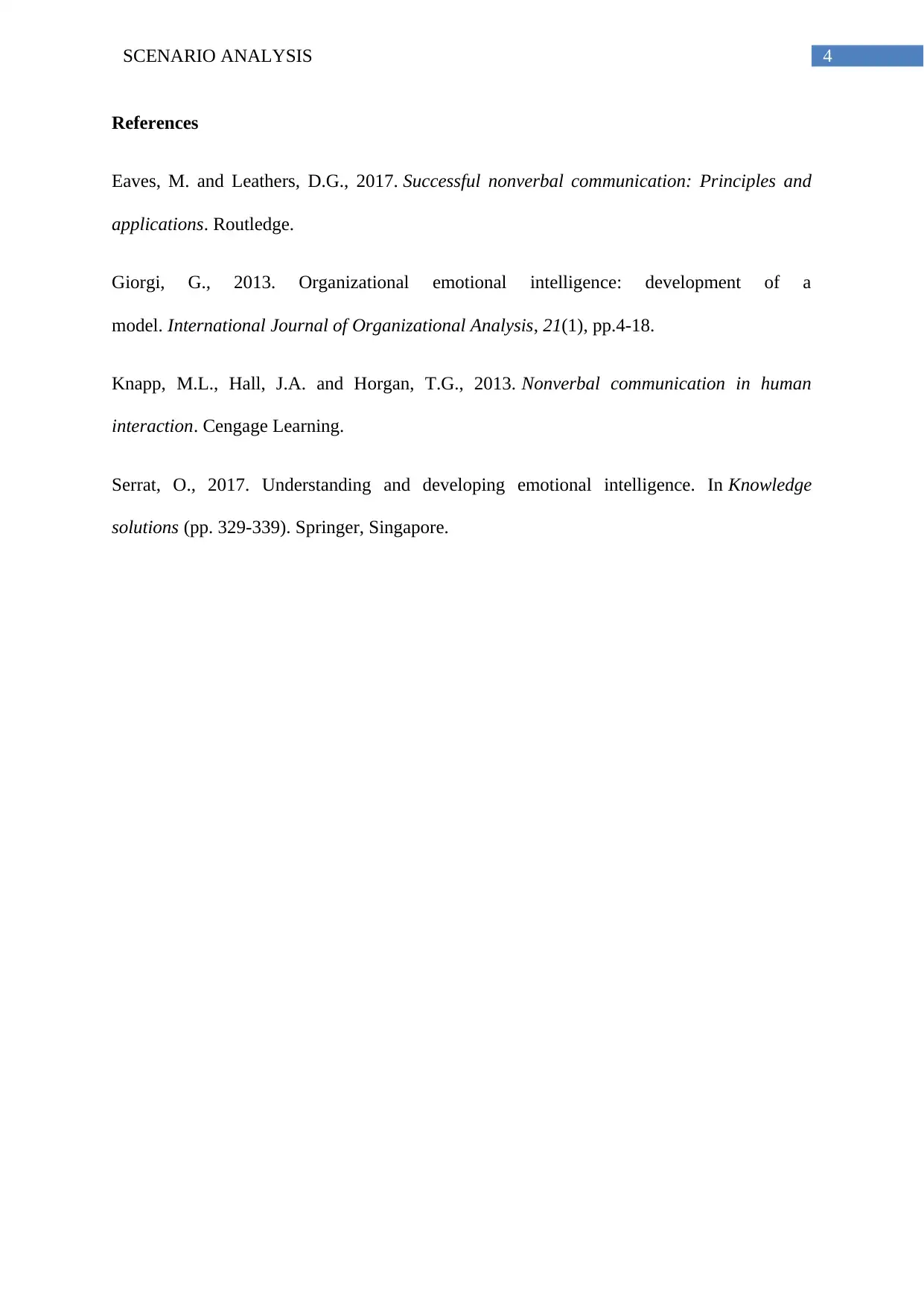Scenario Analysis: Emotional Intelligence and Communication
VerifiedAdded on 2022/10/12
|5
|747
|465
Report
AI Summary
This report presents a scenario analysis focused on an accounting firm, addressing issues related to a junior accountant's performance and interpersonal skills. The analysis centers on applying emotional intelligence principles, specifically self-awareness and empathy, to improve the workplace environment. The report explores how self-awareness can help the junior accountant understand and manage his emotions, behaviors, and interactions with colleagues, while empathy enables him to recognize and respond to others' feelings effectively. Furthermore, the report examines the application of five elements of non-verbal communication, including eye contact, posture, power of touch, facial expressions, and gestures, to create a more positive and effective work environment. The report uses the scenario to illustrate how these elements can be employed to improve communication and build stronger relationships within the team, ultimately enhancing overall workplace dynamics and productivity.
1 out of 5











![[object Object]](/_next/static/media/star-bottom.7253800d.svg)